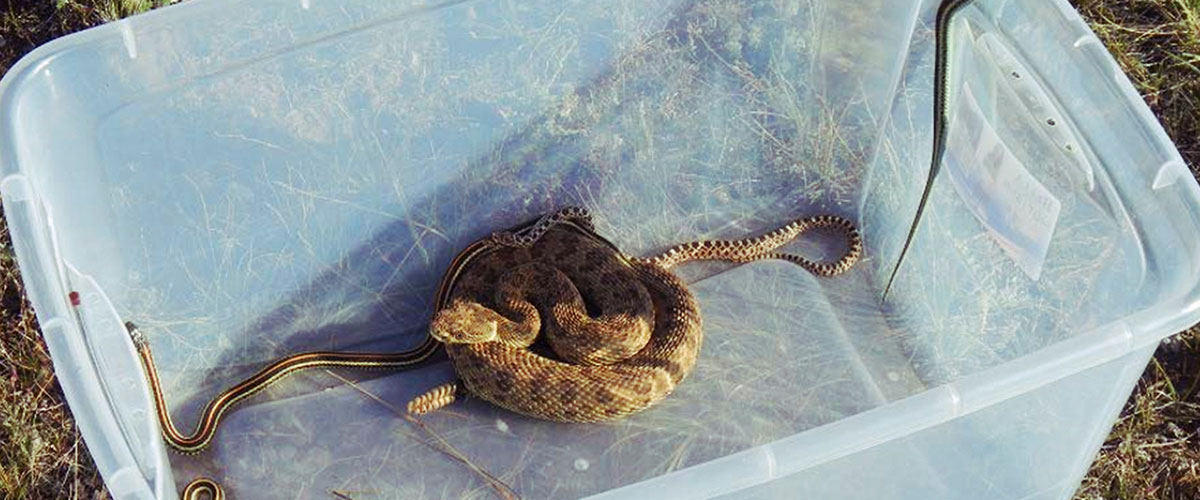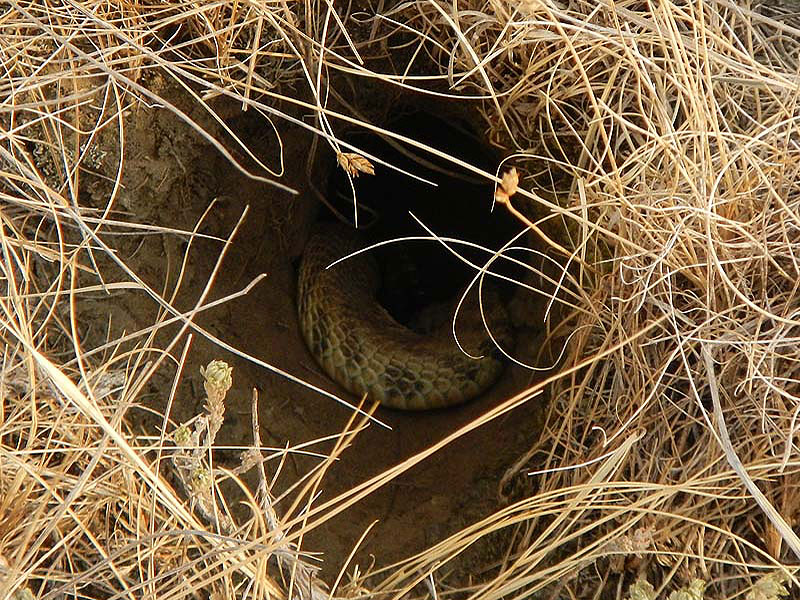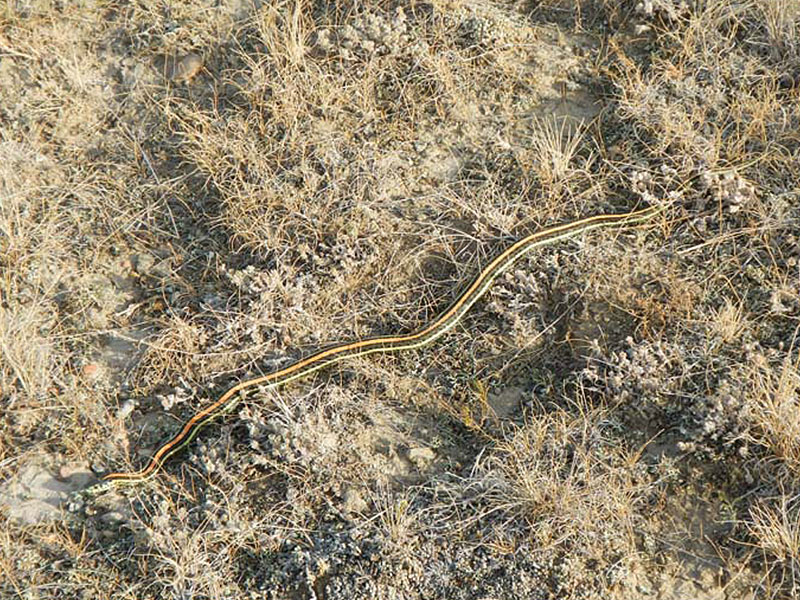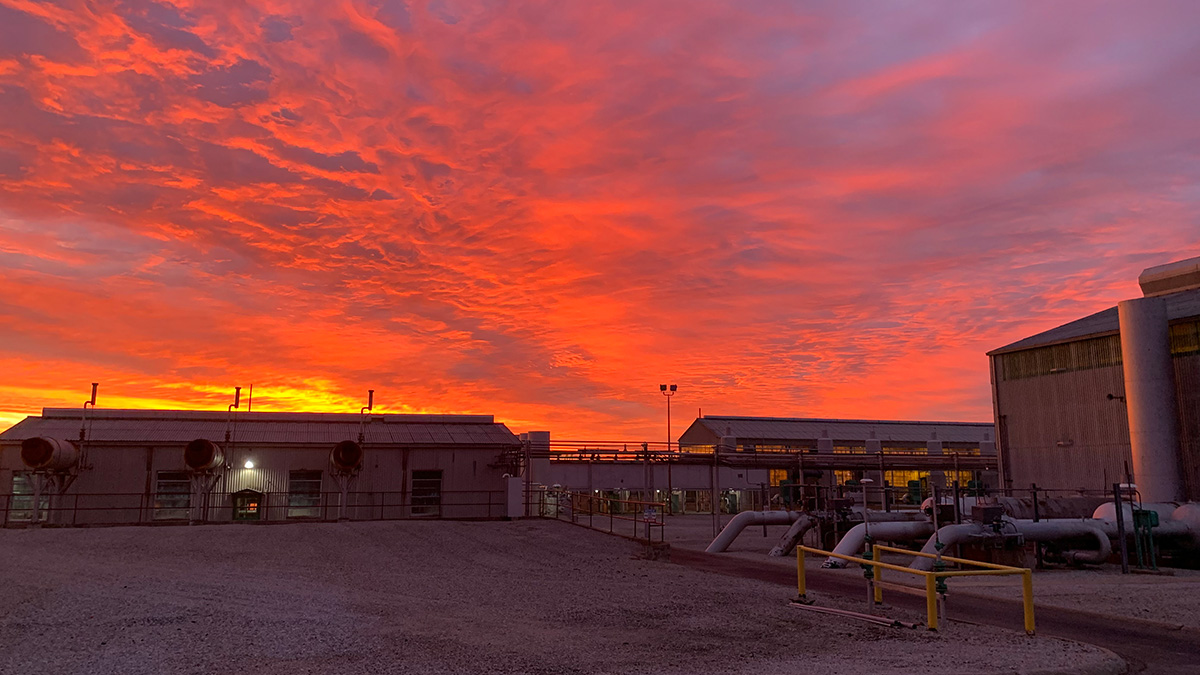Apr 8, 2024
Snake wrangling a slithery business

They may not be cuddly or “aww”-inspiring to many people, but snakes play an important role in the ecosystem, and our people went to great lengths to ensure that no harm was done to the hundreds of snakes they found during a recent pipeline maintenance project on the prairies of southeastern Alberta.
As snakes are commonly found in the area, it wasn’t surprising when a surveyor on site discovered a snake slithering around the pipeline right of way during prep work for the project.
A snake pit was discovered on top of the pipeline – which was likely used as a “hotel” for nighttime sleep – while a few snake hibernacula – which are dens where snakes hibernate through the winter – were found nearby.
“Once we confirmed there were hibernacula in the area where we needed to fix the pipeline as part of routine maintenance, we came up with mitigation measures and plans to protect the snakes, which were then approved by Alberta Environment and Parks (AEP),” says Daniel Chen, an environmental advisor at TransCanada.
Protecting the snakes
Timing was an important consideration.
“During our early environmental prep work for any project, we identify all the constraints such as species at risk and restricted activity periods to figure out when exactly we can conduct our work,” says Daniel.
This meant doing the bulk of the work during the summer and early fall months, after the snakes’ migration period had started and before they returned to their winter homes.
Next, a professional snake wrangler was hired to ensure the reptiles were handled safely and with the least disturbance possible.
Every day, the snake wrangler would do a sweep of the dig area in the morning and continue monitoring the site through the day as work progressed. Before any heavy equipment drove to the site, the snake wrangler would sweep in front of the machinery and inspect the equipment prior to work starting.

Over the course of the dig, the team interacted with up to 150 rattlesnakes, bull snakes and garter snakes.
Luckily for Tyler Paul, the site’s construction manager, snakes don’t rattle him too much.
“We’ve worked around snakes most of our lives down here. When you’re spending 12 hours every day on site, you will see them – it is their habitat after all,” he says.
But not every worker felt that way. Everyone on site carried a hand-held radio, and if they crossed paths with a snake, they would radio the wrangler for help – mainly, to safely move the snake – while staying a healthy distance away from the critter.
Every snake captured by the wrangler was then moved to one of the nearby existing hibernacula.
Respect for wildlife
According to the team, the project was a good example of the strong collaboration and consistent communication between TransCanada and the AEP that resulted in the development of innovative solutions.
Shari Burton, an Alberta pipe integrity manager at TransCanada, says half-jokingly that while she would rather deal with a bear than a snake, it was exciting to come up with solutions to help protect them on the project.
“We even had blueprints of how to build a hibernaculum so that when the dig was over, we could build them a brand-new house just a short distance away from our right of way,” says Shari. “We were going to make one out of wood pallets and dirt, which would eventually rot with nooks and crannies forming – it was going to be a condo complex.”
However, once they realized the snake den on top of the pipeline wasn’t used for hibernation, AEP decided that the wrangler could move snakes to one of the other nearby hibernacula instead of building a new one.

In the end, Shari says it was the team’s diligence in training workers about snakes and understanding the importance of living by the company’s environment guiding principles – protecting the environment in all the work they do – that led to the successful completion of the dig.
“We developed a respect for the snakes in the area. People are often scared or panicky when faced with a snake. But we gained so much understanding about snakes and how they are a key player in the ecosystem,” says Shari.
“That said, it was still the one dig I did not wander out to!”
More information
- Read more: Protecting Land & Wildlife
- Read more: Environment guiding principles



